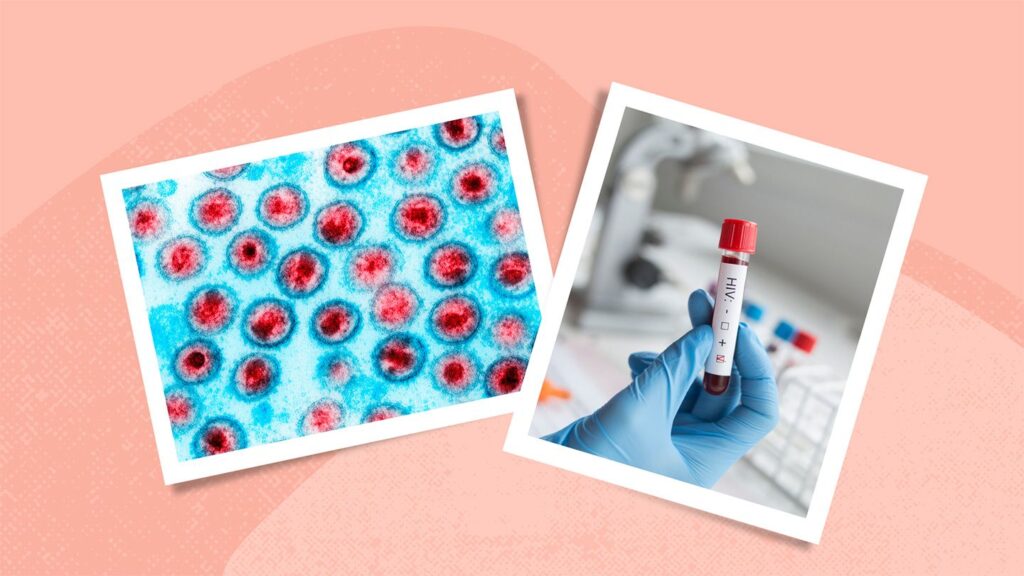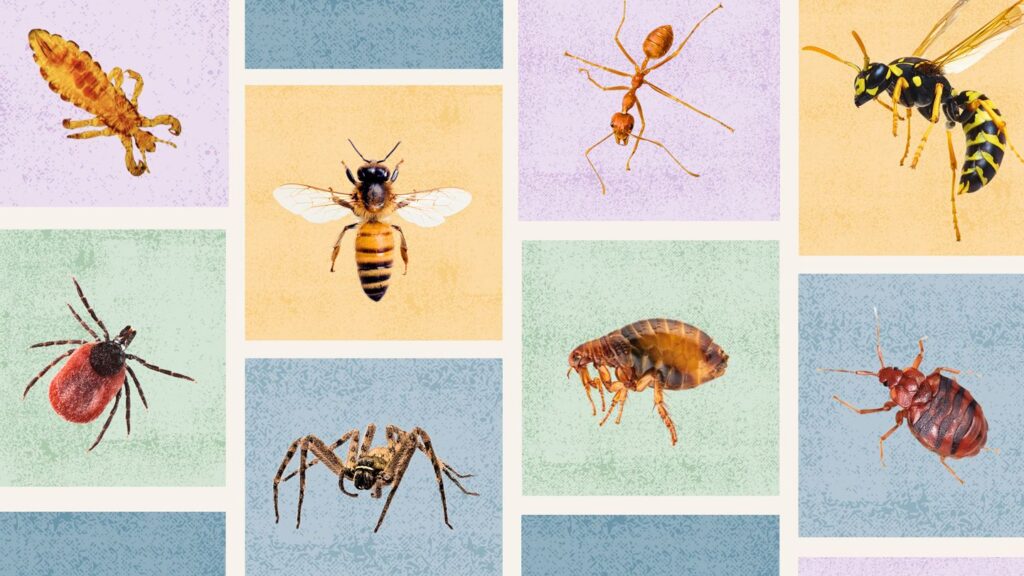Kaposi sarcoma is a cancer that develops in the cells lining the lymph or blood vessels. It usually shows up on the skin, but can occur in multiple locations throughout the body. There is no cure for Kaposi sarcoma, but it can be effectively treated to reduce symptoms, prolong life, and increase quality of life.
Overview Overview Kaposi sarcoma (KS) is a cancer that occurs in people with weakened immune systems. It typically progresses slowly but can also grow aggressively within a location or invade other organs, depending on the type.e60dc2a1-f33c-4a05-9b50-8e3e8e597629a4ff9c39-1197-4b98-9bcd-9114868e9840 Kaposi sarcoma typically develops on the skin, in the lymph nodes, on mucosal membranes like the lining of the mouth, nose, and throat, and other organs such as the lungs or those in the digestive tract.e60dc2a1-f33c-4a05-9b50-8e3e8e5976296e2d443e-6345-4d8d-b09c-a9da0885e860 It can cause severe and life-threatening complications like bleeding and trouble breathing. There is no cure for Kaposi sarcoma, but there are various treatment options to help manage this condition. What Is Kaposi Sarcoma? A sarcoma is a type of cancer that develops in the bones or soft tissues throughout the body, such as the muscles, fat, blood vessels, and nerves.e60dc2a1-f33c-4a05-9b50-8e3e8e5976297bdc37f8-3a47-406b-a933-7b88fe775dec Kaposi sarcoma is a rare form of cancer that develops in cells lining the lymph or blood vessels. It differs from other sarcomas in that the tumor may start developing in several parts of the body at the same time.e60dc2a1-f33c-4a05-9b50-8e3e8e597629f33a7a26-9457-49d6-aa1a-d14cf5e3471a Kaposi sarcoma is characterized by the presence of lesions made of cancer cells, blood cells, and new blood vessels.e60dc2a1-f33c-4a05-9b50-8e3e8e597629c974b8cb-47b5-402d-bfc0-d9f8fed8e145e60dc2a1-f33c-4a05-9b50-8e3e8e597629a43e4d57-832a-4fc9-b793-d244db16c2d0 Kaposi sarcoma occurs when a person is infected with the human herpesvirus-8 (HHV-8), also called Kaposi sarcoma–associated herpesvirus (KSHV). While the HHV-8 virus is present in all forms of Kaposi sarcoma, most people who are infected do not develop KS;e60dc2a1-f33c-4a05-9b50-8e3e8e5976296e2d443e-6345-4d8d-b09c-a9da0885e860e60dc2a1-f33c-4a05-9b50-8e3e8e597629cc6e9c93-2401-411a-ab00-470185a2be73 Those who do develop KS tend to have a suppressed immune system, which is commonly caused by untreated HIV or AIDS, as well as immunosuppressive medications prescribe after an organ transplant.e60dc2a1-f33c-4a05-9b50-8e3e8e597629f33a7a26-9457-49d6-aa1a-d14cf5e3471a Types of Kaposi Sarcoma There are four types of Kaposi sarcoma, categorized based on the population or group of people affected:e60dc2a1-f33c-4a05-9b50-8e3e8e597629a4ff9c39-1197-4b98-9bcd-9114868e9840e60dc2a1-f33c-4a05-9b50-8e3e8e59762973379fa7-c401-4efc-923f-d6e9da435318 Classic (Mediterranean) Kaposi Sarcoma This type of KS occurs in older people from the Mediterranean, Middle Eastern, and Eastern European regions, and is more prevalent in men. Lesions typically show up on the ankles, legs, or soles of the feet. Compared with other types of KS, new lesions don’t develop as often, and they don’t grow as quickly. AIDS-Associated (Epidemic) Kaposi Sarcoma This is the most common type of KS in the United States. It develops in people who have HIV, the virus that causes AIDS. A person has AIDS when HIV has caused significant damage to a person’s immune system. Kaposi sarcoma is an AIDS-defining illness, meaning that when a person with HIV develops KS, it means their disease has advanced to AIDS. Endemic Kaposi Sarcoma Also known as African KS, this type of KS occurs in people living in Equatorial Africa. This disease occurs in younger people (under age 40). Endemic KS was the most common type in Africa until cases of AIDS rose in this region and the AIDS-associated type became more common. Iatrogenic (Transplant-Related) Kaposi Sarcoma This type of KS is connected to organ transplants. The medications given after an organ transplant to suppress the immune system and prevent it from rejecting the newly transplanted organ increase the risk of infections, including KSHV infection.
Symptoms Signs and Symptoms of Kaposi Sarcoma
KS causes abnormal cell growth, which causes red, purple, or brown-colored lesions to form on the ankles, soles of the feet, and legs.e60dc2a1-f33c-4a05-9b50-8e3e8e59762999965116-3deb-407e-8d0a-101b9a306e54 The lesions may also form on other parts of the body — on the surface or inside. They may look bad when they show on the skin surface, but they don’t always cause symptoms.e60dc2a1-f33c-4a05-9b50-8e3e8e59762986c9b0c3-7653-4b49-a3f4-a14d82aedef3e60dc2a1-f33c-4a05-9b50-8e3e8e59762949d8c278-aa2c-4d73-815f-b305e9001295 Depending on where the KS lesions form, you may experience the following symptoms:e60dc2a1-f33c-4a05-9b50-8e3e8e5976290c3be806-0d94-4b43-8d06-287fac5224d6e60dc2a1-f33c-4a05-9b50-8e3e8e5976297cd18110-ed79-4c85-9ed5-ebc21270e382 Abdominal pain Diarrhea Internal bleeding Painful swelling of the legs and feet Shortness of breath and bloody sputum
Causes and Risk Factors of Kaposi Sarcoma Causes A virus called Kaposi sarcoma–associated herpesvirus (KSHV), also known as human herpesvirus 8 (HHV8), causes Kaposi sarcoma. This virus belongs to the same family as the Epstein-Barr virus, which causes mononucleosis and several types of cancer.e60dc2a1-f33c-4a05-9b50-8e3e8e59762979952313-741c-4a4f-b2ad-bd1b3a08a7a1 KSHV interferes with normal cell function, causing the cells to divide uncontrollably and live longer than they should. KSHV also causes increased production and release of chemicals that cause inflammation, which may eventually turn the cells cancerous.e60dc2a1-f33c-4a05-9b50-8e3e8e59762979952313-741c-4a4f-b2ad-bd1b3a08a7a1 The virus is transmitted mainly through the saliva, though experts believe it’s also transmitted sexually (through semen and vaginal fluid). Other modes of transmission include organ transplants and blood transfusions.e60dc2a1-f33c-4a05-9b50-8e3e8e597629a8f73390-9bc5-49a0-980d-cedd84c7137ae60dc2a1-f33c-4a05-9b50-8e3e8e5976298fdb825b-9f5a-4285-a0d3-8df7bbaceaea While infection with KSHV causes Kaposi sarcoma, not everyone with the KSHV infection develops KS, and some people may never show any symptoms. The following groups have a higher risk of developing Kaposi sarcoma:e60dc2a1-f33c-4a05-9b50-8e3e8e59762979952313-741c-4a4f-b2ad-bd1b3a08a7a1 People with a weakened immune system: This may be as a result of living with HIV or AIDS, undergoing an organ transplant, and being an older adult. People of African descent: KS is more common in Africa, and in some areas, an estimated 80 percent of the population shows signs of KSHV infection. This may be because factors that contribute to weak immune systems are more common in Africa, including malnutrition, malaria, and other chronic infections.e60dc2a1-f33c-4a05-9b50-8e3e8e59762979952313-741c-4a4f-b2ad-bd1b3a08a7a1 Men who have sex with men: Kaposi sarcoma is more common in men who have sex with men than those who only have sexual intercourse with women.e60dc2a1-f33c-4a05-9b50-8e3e8e5976296eef09aa-dd67-4f2b-9a8c-a3364eb2b60a The reason is unclear, but it may be linked to the higher prevalence of HIV in homosexual and bisexual men.e60dc2a1-f33c-4a05-9b50-8e3e8e597629c3802bf5-8bf8-4862-91e1-267fd28083c9 People of Mediterranean, Eastern European, or Middle Eastern heritage: Older adults from these regions are at a higher risk of developing classic Kaposi sarcoma.e60dc2a1-f33c-4a05-9b50-8e3e8e597629be9ed492-961d-4052-b74c-3b5648297e82
How Is Kaposi Sarcoma Diagnosed? Diagnosis Doctors may suspect a person has KS during a routine physical exam or when a patient describes symptoms they are experiencing. Experts recommend getting regular physical exams for KS if you have HIV, AIDS, or a medical condition that lowers your immunity.e60dc2a1-f33c-4a05-9b50-8e3e8e5976291ecd0966-d983-4721-9a52-df7c8c5f5e00e60dc2a1-f33c-4a05-9b50-8e3e8e597629bc89d175-4f7b-4e77-8abd-a0b72c3c3ff7 After taking your medical history and family history and doing a physical exam, your doctor may also order the following tests when diagnosing KS:e60dc2a1-f33c-4a05-9b50-8e3e8e5976298879eda7-d32e-4ae2-9e7b-cf264e0c3fffe60dc2a1-f33c-4a05-9b50-8e3e8e597629e66aaa03-b167-4111-8a76-49db3e949dab Biopsy A biopsy is a definitive test for cancer. If your doctor finds lesions on your skin or some other part of your body, they might remove a small sample of tissue from the lesion and send it to the laboratory to check for signs of cancer. Gastrointestinal Endoscopy This may be necessary if your doctor suspects you have KS in your stomach or gut. It involves using an endoscope — a thin, lighted tube with a camera at its end — to look inside different parts of the gastrointestinal tract. Your doctor may also take a biopsy sample during this procedure. Imaging Tests An X-ray of the chest may be done to check for signs of KS in the lungs. A CT scan may sometimes be done for a clearer view or, if you’ve already been diagnosed with KS, to see if and where the cancer has spread. PET scans may also be used to check if the cancer has spread to other parts of the body. Bronchoscopy This procedure may be recommended if you experience symptoms like difficulty breathing or coughing up blood. During a bronchoscopy, your doctor uses a bronchoscope — a thin, lighted tube similar to the endoscope — to look into your trachea (windpipe) and down to the large airways of your lungs to check for KS lesions. Your doctor may also take a biopsy during this procedure if an abnormal area is observed.
Treatment and Medication Options for Kaposi Sarcoma Treatment There are different treatments for KS, depending on the type, location of lesions, your overall health, and any complications that may have developed due to the condition.e60dc2a1-f33c-4a05-9b50-8e3e8e597629cb33bc4f-a319-4360-b7d2-9d364ac0343b Medications Medications may be prescribed in the following forms:e60dc2a1-f33c-4a05-9b50-8e3e8e597629fc8a1515-458b-45ab-b83f-8de6cdcbbdd2 Highly Active Antiretroviral Therapy (HAART) This treatment is often used for AIDS-associated KS and involves combining different drugs to lower the effects of HIV on the immune system. HAART may be combined with other treatments for KS. Chemotherapy Chemotherapy works by stopping the growth of cancer cells, either by killing the cancer cells or preventing cell division. The way chemotherapy is given (on the skin as a gel, by mouth, injected into a vein or muscle, or directly into the cerebrospinal fluid) depends on where the lesions are in the body. Chemotherapy drugs used for KS include liposomal doxorubicin (Doxil) , liposomal daunorubicin (DaunoXome), paclitaxel (Taxol) , nab-paclitaxel (Abraxane), gemcitabine (Gemzar) , vinorelbine (Navelbine) , bleomycin (Blenoxane) , vinblastine (Velban) , vincristine (Oncovin) , and etoposide (VP-16) .e60dc2a1-f33c-4a05-9b50-8e3e8e597629cc882c24-6741-4c38-9644-8d8987055af8 Immunomodulating Agents These medications affect how the immune system functions, but the way they do so isn’t clearly understood. There are three immunomodulating agents used to treat Kaposi sarcoma: thalidomide (Thalomid) , pomalidomide (Pomalyst) , and lenalidomide (Revlimid) .e60dc2a1-f33c-4a05-9b50-8e3e8e597629f6a54874-e0f2-4a79-aa41-ffa48e1179f1 Immunotherapy This treatment uses medications to stimulate your own immune system to fight and defend against cancer. Interferon alfa and interleukin-12 are immunotherapy drugs used to treat KS.e60dc2a1-f33c-4a05-9b50-8e3e8e59762914fde617-a97b-4d88-bb50-42fb65879b81 Studies show that pembrolizumab (Keytruda) may be another effective immunotherapy drug to treat KS.e60dc2a1-f33c-4a05-9b50-8e3e8e59762907f8d83b-4cac-49a0-b4e5-4cd85da080b4 Targeted Therapy This type of therapy uses drugs that can identify and attack certain cells. Monoclonal antibodies are a type of targeted therapy that can attach to a specific target on cancer cells or cells that help that cancer grow. Bevacizumab is a monoclonal antibody that can be used for KS. Tyrosine kinase inhibitors (TKI) are a type of targeted therapy that block signals needed for cancer to grow. Imatinib mesylate is a TKI that can be used for KS.e60dc2a1-f33c-4a05-9b50-8e3e8e5976291d97d0ea-f8af-42c8-b0c4-77ecde980895 Radiation Therapy Radiation therapy uses high-energy radiation to target and kill cancer cells. External beam radiation therapy (radiation delivered from outside the body) is typically used to treat KS lesions on the body. Electron beam radiation therapy is a type of external beam radiation that is particularly effective for treating KS lesions on the skin because it doesn’t pass very far through the skin surface, resulting in fewer side effects. Photon radiation penetrates deeper into the body, and this type of therapy is used for lesions in the mouth or throat.e60dc2a1-f33c-4a05-9b50-8e3e8e5976298ce8968a-c3cf-43e9-8403-03e25f5a3bd9 Surgery For small lesions that are few in number, your doctor may suggest removing them with surgery. Your doctor may use simple excision, which means numbing the area and then removing the tumor with a surgical knife, then stitching the skin back together. Another method that may be used is called curettage and electrodesiccation. This involves scraping away the lesion with an instrument called a curette that has a loop at one end, and then using an electric needle to kill any remaining cells in the area.e60dc2a1-f33c-4a05-9b50-8e3e8e5976298f23a5cc-ceda-4a84-8d2e-9c49b6c37301 Cryosurgery Also called cryotherapy, cryosurgery uses an instrument to apply liquid nitrogen to a tumor to freeze and destroy the abnormal tissue. While helpful for treating small lesions on the surface, it may not be as effective for deep or large lesions.e60dc2a1-f33c-4a05-9b50-8e3e8e59762964a8a5c0-49e9-43e2-8062-ed1dd6fffaf4 Topical Treatment Doctors sometimes prescribe topical creams or gels like alitretinoin (Panretin) , a retinoid drug, and imiquimod (Aldara) to treat KS lesions.e60dc2a1-f33c-4a05-9b50-8e3e8e5976295f683732-0644-445c-a61e-aa38ab1b7d99
Prevention of Kaposi Sarcoma Prevention There are currently no vaccines to protect against KS, but since HIV infection and a weak immune system are significant risk factors, taking steps to prevent HIV and also ramp up your immune system may help lower your risk of developing this form of cancer.e60dc2a1-f33c-4a05-9b50-8e3e8e5976294c6370db-4fa3-4c99-8e55-c89b0e26966e Consider these preventive tips: Use condoms during sex, especially when you’re unsure of your partner’s HIV status. Take pre-exposure prophylaxis (PrEP), an antiviral pill that prevents HIV infection, daily if you have a higher chance of being exposed to HIV. Avoid sharing needles of any form, as this is one way that HIV can spread. Get regular screenings for HIV. This can help with early detection and early treatment. If you already tested positive for HIV or KSHV, speak to your doctor about medications you can take to reduce your chances of developing Kaposi sarcoma. If you’ve had an organ transplant, share your concerns about Kaposi sarcoma with your doctor and ask about immunosuppressive medications that might reduce your chances of getting KS while still helping to prevent rejection of the new organ.
Lifestyle Changes for Kaposi Sarcoma Lifestyle Changes Health experts are not sure if lifestyle changes can improve KS outlook or prevent the cancer from coming back. But a healthy lifestyle with the following habits can have an overall positive effect on health, beyond the cancer:e60dc2a1-f33c-4a05-9b50-8e3e8e597629b0916ac9-ef2e-4b51-ab30-56839626959c Exercise regularly. Take your antiviral medications as directed by your doctor, if you have HIV. Eat nutrient-rich foods that boost the immune system, such as leafy greens, fruits, eggs, whole grains, and various spices.e60dc2a1-f33c-4a05-9b50-8e3e8e5976291c3517db-ecff-4ce0-9565-c98f766c25d9 Maintain a healthy body weight. Quit smoking.
Prognosis and Outlook for Kaposi Sarcoma Prognosis and Outlook for Kaposi Sarcoma There is currently no cure for Kaposi sarcoma, but treatments aim to control symptoms, lessen discomfort, prolong life, and improve quality of life for people living with this disease.e60dc2a1-f33c-4a05-9b50-8e3e8e5976295746ad29-132d-4518-aba0-24d0a1c26ca2 The outlook for Kaposi sarcoma varies depending on the type, stage, and other factors, such as the person’s overall health status, CD4 count (a measure of immune system function), treatment approach, and complications of the disease or underlying medical conditions.e60dc2a1-f33c-4a05-9b50-8e3e8e5976292ebd29a5-2be0-4ca5-a29f-3da2b71533d2 Although KS has no cure, more than half of people who undergo chemotherapy will see improvement.e60dc2a1-f33c-4a05-9b50-8e3e8e5976298af1aa54-4516-4734-8c17-218e0e311cea In people with limited disease and a good immunological response to HAART, about 80 percent may experience complete remission.e60dc2a1-f33c-4a05-9b50-8e3e8e597629f9f36d29-0da8-4adb-9d03-ba88c7a855dc Prognosis is worse in people whose vital organs, such as the lungs, have been affected.e60dc2a1-f33c-4a05-9b50-8e3e8e59762910cc7fe6-66ee-4826-b500-c9106a3a65c9
Complications of Kaposi Sarcoma Complications Kaposi sarcoma and side effects of treatments may cause the following complications:e60dc2a1-f33c-4a05-9b50-8e3e8e597629f05287a4-9598-4649-a23e-e8b9a7e09722 Chronic pain Swelling, scarring, and disfigurement of the skin Trouble breathing A second cancer Nerve pain and damage Heart damage Infertility
Research and Statistics: How Many People Have Kaposi Sarcoma? Research and Statistics Kaposi sarcoma was very rare in the United States before the AIDS epidemic, with about 2 cases for every million people per year. After the epidemic, new cases rose by more than 20 times, reaching a peak of about 47 cases per million people annually in the early 1990s.e60dc2a1-f33c-4a05-9b50-8e3e8e5976292c5fc413-c6e9-450f-b52a-a4c679f30468 But with the introduction of potent antiretroviral medications that improved the management of HIV, cases of KS dropped dramatically over the past 25 years.e60dc2a1-f33c-4a05-9b50-8e3e8e597629841d0a6f-60b8-4a50-a2c3-f04e31481f10 According to the American Cancer Society, Kaposi sarcoma now occurs at a rate of about 6 cases per million people each year in the United States, with more African Americans affected than white individuals.e60dc2a1-f33c-4a05-9b50-8e3e8e597629b9745e29-9e10-4572-8df5-c65b45a444c1 Men are affected more than women, even though the sex difference is less pronounced in sub-Saharan Africa than in North America or Europe. Research is being conducted to find more preventive and effective treatment methods for KS. In addition to antiretroviral medications, scientists have found that newer drugs, such as valganciclovir, which is used to treat related herpesviruses, can also be helpful for treating KSHV infections.e60dc2a1-f33c-4a05-9b50-8e3e8e597629b6775442-6abe-434f-8f19-6c94873d5c91 And new treatments using targeted therapies are currently being tested in clinical trials.e60dc2a1-f33c-4a05-9b50-8e3e8e597629faae68a3-45bb-479a-a926-a4cd92f0629f
Support for Kaposi Sarcoma Support Living with a rare cancer like KS can be challenging. Learning more about your condition, going for follow-up visits with your physician, accepting the support of family and friends, and joining support groups can be helpful throughout your treatment and recovery journey. Online support groups through organizations like the Cancer Survivor’s Network or Sarcoma Alliance provide a great avenue for cancer patients, survivors, and their families and friends to connect and share their experiences.
The Takeaway Kaposi sarcoma (KS) is a rare cancer caused by Kaposi sarcoma–associated herpesvirus (KSHV), also known as human herpesvirus 8 (HHV8), that often affects people with weakened immune systems. KS is characterized by lesions on the skin, but it can also affect other organs. While there’s no cure for KS, it can be managed with treatments like HAART for HIV/AIDS-associated cases, chemotherapy, immunotherapy, surgery, radiation therapy, cryosurgery, and topical medications. Regular checkups and a healthy lifestyle will be helpful in managing your KS and improving your overall quality of life.
Resources We Trust Cleveland Clinic: Kaposi SarcomaMayo Clinic: Mayo Clinic Minute: Know Your Status — the Importance of HIV TestingAmerican Cancer Society: If You Have Kaposi SarcomaNational Cancer Institute: Kaposi Sarcoma Treatment (PDQ®) – Patient VersionMemorial Sloan Kettering Cancer Center: Follow-Up Care & Support for Kaposi Sarcoma
Kaposi Sarcoma (KS)



